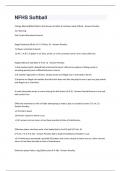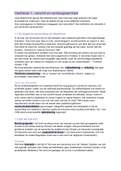College aantekeningen
ocr a level biology a module 2 - all notes (based on specification)
- Vak
- Instelling
This is all of my notes from ocr a level biology a, they are comprehensive notes for all specification points for the ocr a level biology a programme. I have made these notes this year, these notes have helped me achieve A* in all of my mock exams.
[Meer zien]








